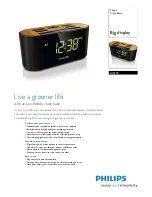
Chapter 7 Specifications of the TimeProvider
Inputs
196
TimeProvider User’s Guide
097-58001-02 Revision G – April 2008
Hold-in and Pull-in Range
Table 7-3
lists the default values for the Hold-in range and Pull-in range for the
Clock cards available for the TimeProvider.
According to GR-1244, hold-in is the process by which an NE and its clocks
maintain lock to the active reference as the frequency of that reference varies
arbitrarily slowly. Thus, the hold-in range is the largest band of input signal
frequency for which the NE and its clocks will maintain lock. As is the case for the
pull-in range, the hold-in range is generally specified so that an NE/clock of a given
stratum level will maintain lock with a reference that is traceable to a clock of the
same stratum level.
According to GR-1244, pull-in is the process during which an NE's clocks become
locked to a reference. In turn, an NE's pull-in range is the largest band of input
reference signal frequency for which its clocks will acquire lock. In general, pull-in
requirements are intended to assure that any NE/clock will always be able to lock to
a reference signal that is traceable to a clock of equal (or higher) quality. Therefore,
for a given stratum level the minimum pull-in range is generally the same as the
maximum acceptable free-run frequency offset.
Inputs
Front Access and Rear Access shelves contain three card slots: two for IOC cards
and one for an IMC or integrated IMC/TPIU card.
Each IOC supports three input ports: two span inputs and one PRS input.
Input supported:
PRS Input port: 2048 kHz G.703/13, 1.544/5/6.312/10 MHz sine or square
Input ports 1 and 2: 2048 kbit/s,G.703/9, 2048 kHz G 703/13, DS1,
1.544/5/6.312/10 MHz sine or square, CC/JCC/JCC4 composite clock
Table 7-3. Hold-in and Pull-in Range
Clock Type
Hold-in Range
Pull-in Range
Type I (Quartz IOC only)
9.8 E-6
9.3 E-6
Type II/ST2 (Rb IOC only)
4.0 E-8
3.5 E-8
Type III/ST3E (Quartz IOC only)
9.8 E-6
9.3 E-6
















































